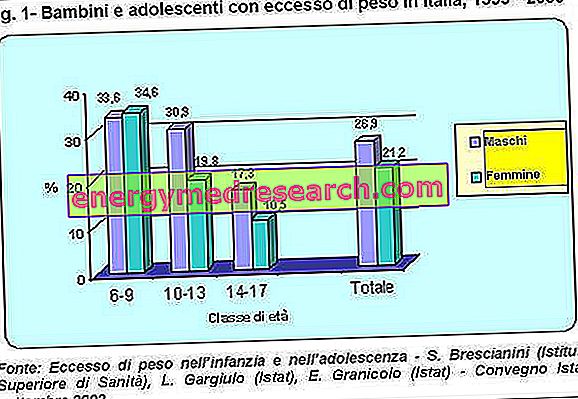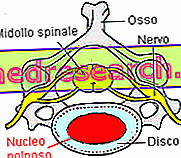Key points
"Contagious mollusc" is defined as a viral infection of the skin and mucous membranes: it is an extremely contagious disease, but fortunately benign.
Contagious mollusk: causes
The cause of the contagious mollusc resides in a viral infection supported by DNA viruses, belonging to the Poxviridae family.

See More Photos Molluscum Contagious
Transmission can take place by simple contact with the skin / mucous membrane of an infected person; the contagious mollusc belongs to the list of sexually transmitted diseases.Molluscum contagious: symptoms
The contagious mollusk creates purely cutaneous symptoms: the skin of the infected subject is covered with small papules in relief, which can vary in number (a couple or more than a hundred) and size (2-15 mm).
In particularly sensitive patients, papules create itching, inflammation, secondary infections and ocular lesions (conjunctivitis).
Molluscum contagiosum: diagnosis
The diagnosis of contagious mollusk consists of direct medical observation of papular lesions. Eventually, clinical suspicion can be confirmed by a skin biopsy.
Molluscum contagiosum: therapy
The healing of papules from contagious molluscs is possible, but often requires long waiting times (months / years). Drug therapy involves topical application of keratolytic, antiviral or immunosuppressive drugs. The most difficult papules are eliminated by scraping, cryotherapy or laser therapy.
Molluscum contagiosum
The contagious mollusc is a viral disease of the skin which, only occasionally, also affects the mucous membranes. Purely benign pathology, the contagious mollusc is caused by the infection of a DNA virus: the pathogen is responsible for papular lesions that can spread throughout the body surface without causing damage to the internal organs.
The unique nickname with which the disease is identified derives from the Latin molluscus, which means soft : the lesions induced by the molluscum contagiosus, in fact, have a soft, rather spongy appearance.
In healthy individuals, with a vigorous immune system, the contagious molluscum regresses spontaneously, although healing times are generally quite long (months / years). Different discourse for the immunocompromised: in addition to not being able to eradicate the molluscum contagiosus alone, these subjects undergo papular lesions more important and rather difficult to eliminate even with the help of medicines.
The contagious mollusk can be cured by applying the same drugs used to treat warts. Particularly aggressive lesions, difficult to eliminate by pharmacological treatment, require surgical excision.
Incidence
We do not have reliable and undisputed data on the incidence of molluscum contagiosum, therefore it is not possible to report precise values. What is certain is that the disease is common, much more than one can imagine. In fact, given the low danger of the contagious mollusk, the affected patient tends not to report the disease.
The spread of the contagious mollusk seems to be favored by warm climates, with high humidity: tropical temperatures facilitate, in fact, contagion.
According to some statistical estimates, it seems that the contagious mollusc generally affects approximately 2.6 individuals per 100 healthy subjects. In 80% of diagnosed cases, the molluscum contagiosum involves children under the age of 15, with the highest incidence in the preschool age (1-4 years).
The prognosis is excellent in the vast majority of cases.
Causes and risk factors
CAUSES AND TRANSMISSION
The contagious mollusk is caused by a viral infection sustained by DNA viruses, belonging to the Poxviridae family. The virus involved in the infection is known as molluscum contagiosum virus, or more simply with the acronym MCV. The only host of the virus is man.
There are 4 types of MCV, identified with numbers from 1 to 4; the most widespread of all seems to be MCV-1, while the rarest is MCV-2 (a typical vector of adult contagious mollusc).
The prefix Pox- of the family the virus belongs to ( Poxviridae ), refers to the particular characteristic of the typical molluscum contagiosum lesions: in English, the term Poxes refers to vesicles .
The contagious mollusk is transmitted in several ways:
- Direct contact with the skin of an affected individual;
- Mixed use of sheets, towels or infected linen;
- Sexual contact: in similar situations, the papular lesions of the contagious mollusc develop in the genital area. In this case, the differential diagnosis with warts and herpes simplex lesion is required;
- Sharing tanks or showers with subjects affected by contagious molluscs.
CATEGORIES AT RISK OF CONTAGIOUS MOLLUSCUS
The contagious mollusk can ideally affect anyone; however, patients with a compromised immune system (eg AIDS patients, transplant recipients, etc.) are the most exposed category to the risk of infection. According to statistical surveys reported in the Journal of the American Academy of Dermatology, the contagious molluscum affects 5-33% of AIDS patients.
Even patients suffering from lymphoproliferative diseases (caused by the proliferation of lymphoreticular system cells), and treated with corticosteroid drugs, are more at risk of contracting the contagious mollusc.
Another category of subjects exposed to molluscum contagiosum virus infections are children suffering from atopic eczema: despite what has been said, no scientific evidence is available to show the correlation.
Signs and symptoms
To learn more: Symptoms Molluscum contagiosum
After contracting the MCV virus, the contagious mollusc shows no symptoms before 2-7 weeks (incubation time).
Generally, the lesions begin with a small painless, extremely soft papule. The skin sore is a cupoliform papule, characterized by the typical central umbilication: in other words, the papules of the contagious mollusc have a small dimple in the center.
The size of the papule generally varies from 2 to 6 mm. However, in HIV-positive patients also affected by contagious molluscs, lesions tend to reach even 15 mm.
The papules can spread throughout the body surface, therefore exceed one hundred, or be limited to two or three small sores.
Although the papular lesions generated by the contagious mollusc may appear in any surface area of the body, in most affected subjects papules are observed in the face, armpits, arms, hands and groin. The infection does not involve the palms of the hands or the soles of the feet.
Sometimes, papules can cause itching or mild pain.
In some particularly sensitive patients, especially if severely immunocompromised, the symptoms of the contagious molluscum may worsen, thus creating irritation, inflammation, secondary infections and ocular lesions (conjunctivitis).
Table of characteristics
The table shows the general characteristics of the lesions induced by the contagious mollusc.
| General characteristics of papular lesions | Papular swollen, soft lesions, characterized by a central navel |
| coloration | The papules of the contagious mollusc may be of the same color as the skin, or may take on a yellowish, gray or whitish color |
| dimensions | In general, the size of the mollusc papules varies from 2 to 6 mm. In AIDS patients they reach 15 mm |
| Location | Papules tend to spread in the face, underarms, arms, hands, groin. Possible also the proliferation of the papules at the level of the genital mucous (transmission of the virus by sexual contact) |
| Risk of injury | Poor / no |
| Symptoms | Generally asymptomatic. Sometimes they can cause itching, discomfort and pain |
| Timing of healing | Injuries caused by molluscum contagiosus regress in a few months or years. |



